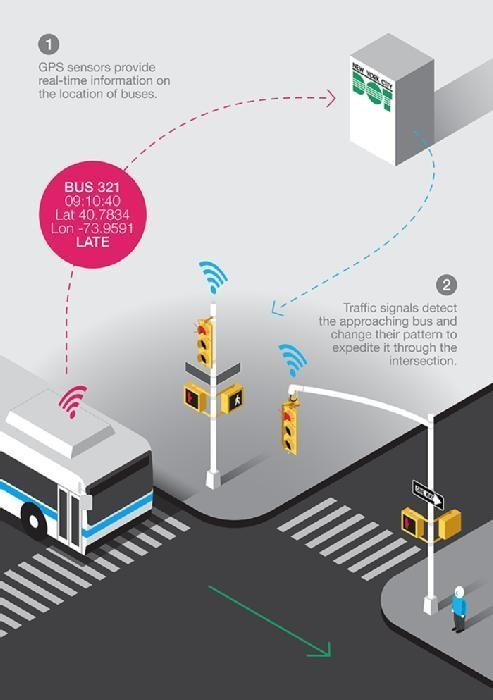
olly - Fotolia
NYC smart city projects focus on user experience, transportation
In NYC, smart city initiatives are all about the area's citizens, residents and tourists, with user experience a key consideration for success.
Across the city's five boroughs, New York agencies are exploring innovative approaches to building a smarter, more equitable and responsive city. The objective is to make New York City the most innovative and tech-friendly city in the world.
The city that never sleeps appears to be well on its way to achieving that goal. It was awarded the "2016 Best Smart City" by the Smart City Expo World Congress, an award that recognized NYC's cutting-edge smart city initiatives as able to resolve urban challenges and benefit residents and the city itself.
The NYC smart city approach is to focus on ensuring that what the city is doing has a positive impact on the citizens, residents and tourists.
Rather than expending too much effort on individual projects or use cases, such as a smart lighting corridor, the city is trying to shift its focus to ensure smart and connected infrastructure systems interoperate with each other to provide a fundamentally improved user experience, said Miguel Gamiño, the city's chief technology officer.
"And that means thinking about how to feed data in and out of a platform that could better inform the apps that people are already using," he said.

For instance, if a department implements a smart parking meter app and another department implements a smart lighting system, the city wants to be sure it can enable those pieces of infrastructure to interact with one another, Gamiño said.
"When someone pulls up to a meter, for example, they could potentially pay that meter from their smartphone through an existing payment app," he said. "And that meter could tell the streetlight that you're there so it increases its brightness while you're trying to park your car or get in or out of it to improve public safety."
Cities shouldn't just implement smart technology because it's in vogue or convenient to city operations, Gamiño said. NYC smart city projects are taking this to heart.
"We want to improve city operations and make it more efficient in the process," he said. "But we're really focused on using these technologies and technology in general to improve New Yorkers' lives -- and that means promoting better outcomes for the people."
One NYC smart city project being implemented is LinkNYC, a communications network that will replace over 7,500 payphones across the five boroughs with new structures called Links.
Each Link provides fast, free public Wi-Fi, phone calls, device charging and a tablet for access to city services, maps and directions, Gamiño explained. LinkNYC is completely free because it's funded through advertising. Its digital outdoor advertising network will enable companies to reach residents and visitors, as well as generate more than a half billion dollars in revenue for the city.
"People can use the internet; our 311 app [a one-stop shop for all government information and nonemergency services] is loaded on it so you can request information from 311 from that Link device," he said. "It also lets you make a phone call and charge your mobile devices via a USB charging port."
NYC smart city initiatives take aim at transportation
NYC is also in the second phase of the Connected Vehicle Pilot Project, a national effort managed by the U.S. Department of Transportation to deploy, test and activate mobile and roadside technologies and enable multiple connected vehicle applications.
The city is currently designing, building and testing next-generation connected vehicle technology to keep the public moving more quickly and safely. The project is part of the city's Vision Zero Action Plan aimed at ending traffic deaths and injuries on city streets.
During phase one of the pilot, the NYC Department of Transportation prepared a deployment concept to carry out a connected vehicle program involving up to 8,000 vehicles, including cars, taxis, trucks, pick-up trucks and buses. The goal of the pilot is to enable the city to develop and deploy more than 15 safety applications to provide in-vehicle warnings to drivers.
In addition, the transportation department is evaluating vendor proposals for mobile wearable devices as part of the pilot, as well as a mobile app that will provide intersection movement guidance for visually impaired pedestrians.
Part of the NYC smart city initiatives, Gamiño said, is developing guidelines to help government agencies and its partners responsibly deploy connected devices and IoT technologies. More than 20 cities worldwide have joined NYC in this effort.
"We have issued IoT guidelines that were signed off on by a number of cities around the world," Gamiño added. "That was an initial stake in the ground in terms of the things we need to be considering as we move forward with IoT-connected projects or smart-connected infrastructure."






